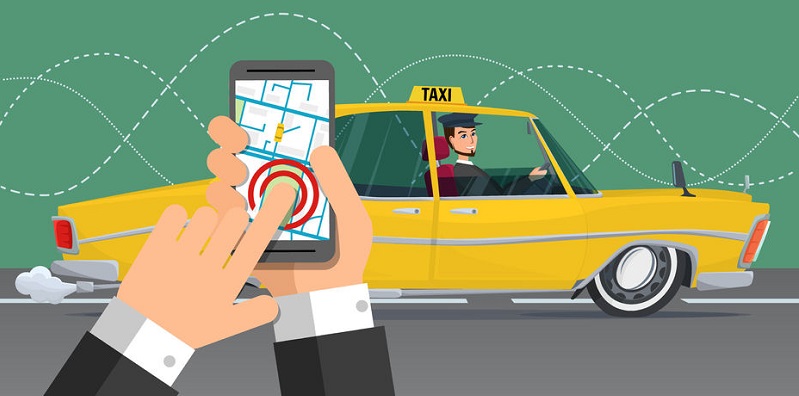Taxi drivers waited at DIA for passengers an average of 50 minutes in 2014, compared with 2 hours, 15 minutes today.
When Denverites need a ride home from the airport, they’re increasingly reaching for their smartphones instead of waving their hands to flag taxicabs.
It may be the convenience of using an Internet-based hired-car service such as Uber or Lyft. It may be the fun of pressing a few buttons and watching your ride inch across the map to meet you in minutes.
Whatever the reason, there’s a struggle between the old and the new, and you’re in the middle of it.
And while the new services capitalize on their innovative method for connecting drivers with riders, traditional taxi services emphasize their safety and thorough regulation.
Rides Are Changing
The increased demand for Uber and Lyft cars and the declining use of traditional cabs became so large over the past few years that that DIA is cutting back on taxis, according to a report by Denver Business Journal writer Cathy Proctor. On April 1, DIA cut the number of registered taxis that can use its commercial waiting lot from 321 every 24 hours, to only 252, airport spokesman Heath Montgomery told the newspaper. He said the taxi reduction is just a temporary action while airport officials examine the trends and come up with a new plan. One idea is to contract with the transportation providers.
Seven local cab companies share the daily allotment. There’s no limit on how many passengers taxis and hired cars can ferry to the airport.
Taxi drivers waited at DIA for passengers an average of 50 minutes in 2014, compared with 2 hours, 15 minutes today, Montgomery said. They averaged about five trips per day a few years ago, but recently only two per day.
In December 2014, taxis made 30,535 trips from DIA, compared with 10,822 for Uber and Lyft, Proctor reported. But by July 2016, the roles had reversed, with nearly 61,000 hired-car trips and little more than 36,000 licensed taxi trips.
A Lot of Competition
Uber and Lyft drivers can be found sleeping in their cars at DIA’s hired-car lot so they can get enough fares, KMGH-TV’s Jaclyn Allen reported. She interviewed driver Jaysun Baez, who spends more nights in his car in Denver than his bed in Colorado Springs.
“The car becomes more of your second home,” Baez said. “You just get used to it after a while. We learn to adapt.”
Lyft driver Crystina Page of Colorado Springs, a single mother of three teenagers, told Allen she needed 70 rides a week in Denver to have her car rental fee waived by her service, so she sleeps in her car four nights each week and saves for enough money to buy her own.
“A lot of us drive into Denver to make the money, whereas if we stay in the cities that we live in, the money is just not available,” Page said.
Convenience Versus Safety?
Uber received fines in the thousands of dollars early this year as the Colorado Public Utilities Commission cited it for violations, including having one driver who lacked a valid driver’s license, KCNC-TV’s Rick Sallinger reported. The commission uses undercover inspectors posing as travelers to get an inside view of hired cars. The unlicensed driver cost Uber $4,300. The company said he had a license when he started driving but later had it revoked.
Some Uber cars were cited for lacking markings identifying them as service cars, Sallinger reported. Another missed a mandatory inspection. One Uber driver’s medical certification had expired. Lyft received no citations in the Denver area by late April. All the citations issued for ride-sharing apps were issued to Uber this year.
Taxis must pass similar inspections and also face measures such as fingerprinting and background checks by the Colorado Bureau of Investigations.
Injuries and fatalities involving Uber and Lyft cars make headlines from time to time. But one recent accident reported by The Associated Press proves that Uber’s technologies can’t overcome all risks. In late March a privately owned vehicle crashed into an experimental self-driving SUV owned by Uber. There were no occupants in the SUV and no one was injured in the auto accident.

